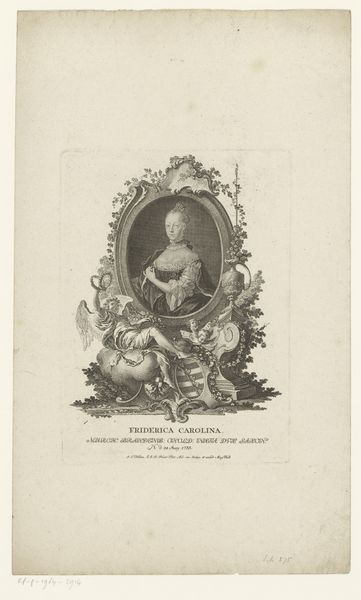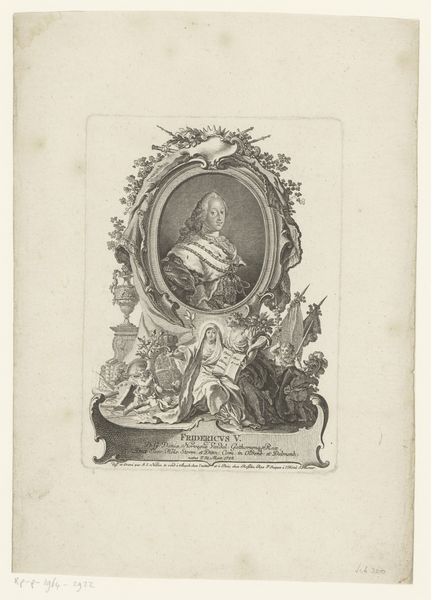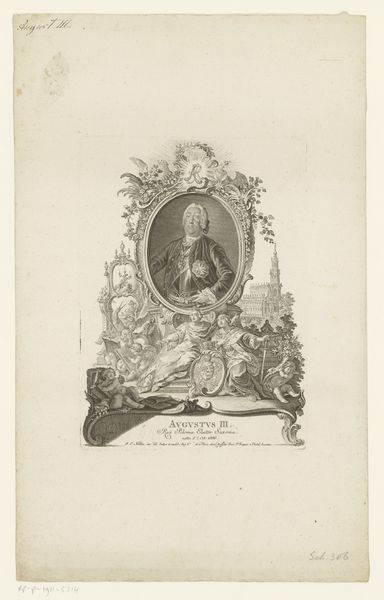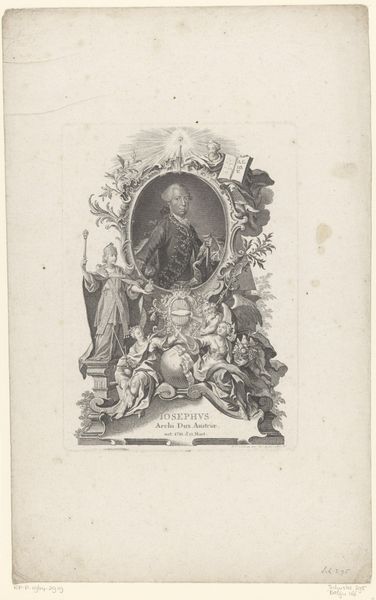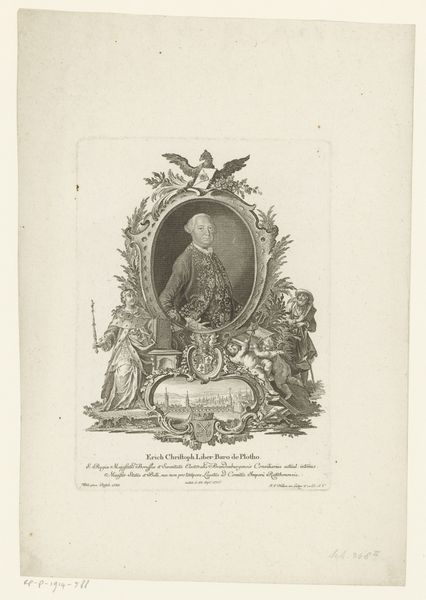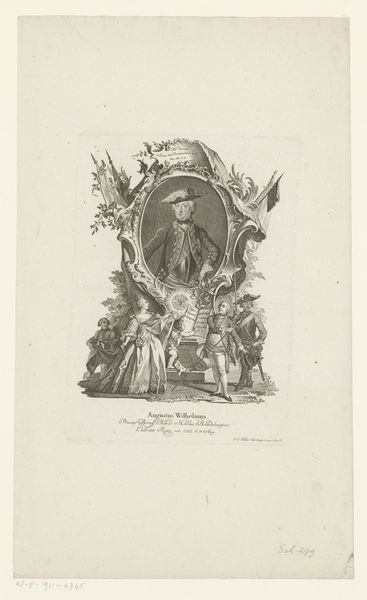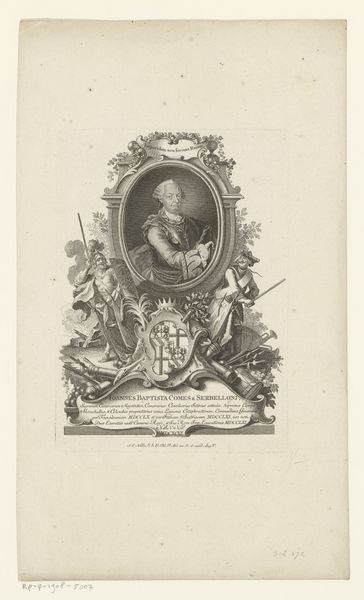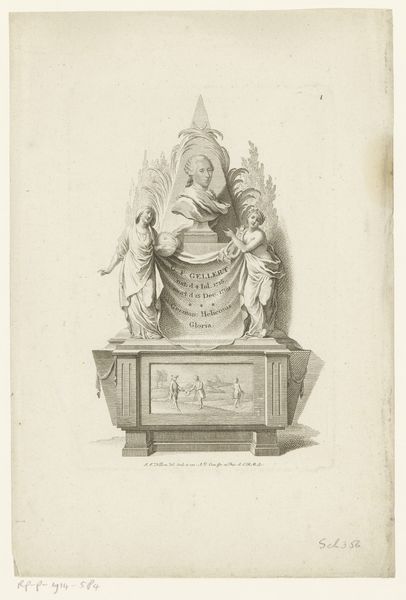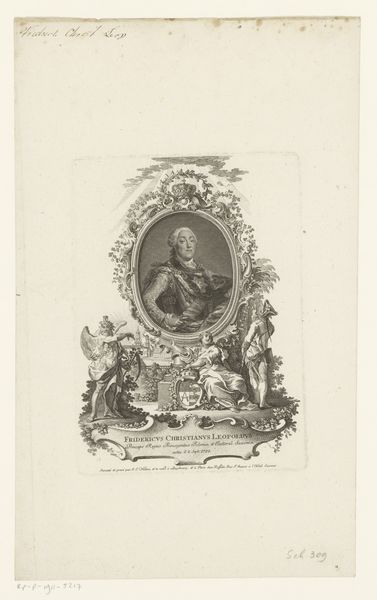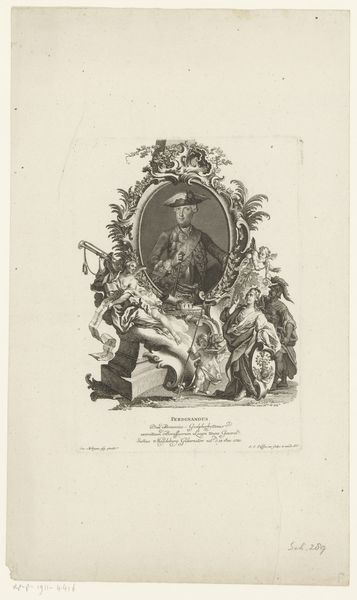
Dimensions: height 224 mm, width 162 mm
Copyright: Rijks Museum: Open Domain
Editor: Here we have Johann Esaias Nilson's "Portret van Clemens XIII," an engraving created sometime between 1758 and 1788. It's teeming with Baroque ornamentation and looks remarkably like an official portrait. What do you make of the intricate composition? Curator: The visual orchestration is quite compelling, isn't it? Note how Nilson employs the oval frame. It focuses our attention on the subject, Clemens XIII, while simultaneously providing a contained space from which allegorical elements spill forth. Do you observe how the artist juxtaposes textures and forms to create a dynamic surface? Editor: I see the contrasting textures now. The smoothness of the portrait versus the dense foliage and symbolic objects is striking. Does this contrast contribute to the overall meaning? Curator: Intrinsically, yes. The formal arrangement directs our reading. The smoothness alludes to Clemens XIII's status, offering an idealized representation. Meanwhile, the textured surroundings signify his dominion and authority. This generates a visual dialogue about power and representation within the engraving itself. Observe the balance, the rhythmic repetition of shapes. Editor: So, by focusing on the elements within the work, like texture, shape and form, and how they are organised, we can unravel the meanings the artist constructs? Curator: Precisely! Formal analysis prioritizes the internal relationships. By scrutinizing Nilson’s structural choices, we gain insight into how meaning is produced within the artwork. Editor: That’s fascinating. I initially saw just a historical portrait, but I now appreciate how the very arrangement speaks volumes. Curator: Indeed, and it's through that lens that we recognize not just what is shown but how it’s communicated. The engraving is, thus, both image and intricate language.
Comments
No comments
Be the first to comment and join the conversation on the ultimate creative platform.
